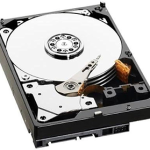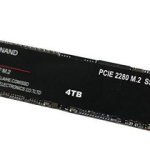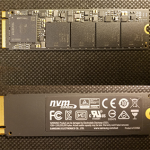Boost Your Work-from-Home Setup
A Guide to Upgrading your computer with a Solid State Drive



UPgrading Your Hard Drive with a Solid State Drive
If you’re working from home, your computer is probably your most important tool. Whether you’re managing spreadsheets, editing photos, or hopping between endless video calls, a slow or unreliable machine can tank your productivity. The good news? You don’t need to buy a brand-new system to boost your performance. Upgrading to a Solid-State Drive (SSD) is an affordable, efficient way to breathe new life into your computer—and it’s worth every gigabyte.
What Does It Mean to Upgrade Your Hard Drive?
Upgrading your hard drive means replacing your existing storage device—usually a traditional Hard Disk Drive (HDD)—with a faster, more efficient SSD. The hard drive is where all your files, programs, and the operating system are stored, so its performance has a direct impact on how quickly your computer can access and process data. By switching to an SSD, you’re essentially giving your system a high-speed overhaul. Tasks like booting up, opening applications, and transferring files become significantly faster, making your computer feel brand-new.
Can I Upgrade My Hard Drive?
Upgrading your hard drive to an SSD typically involves backing up your data, physically installing the new drive, and transferring your operating system and files. While this can be a straightforward process for tech-savvy individuals, it’s not always as simple as it seems.
That’s why it’s often best to let a professional handle the upgrade for you. A trusted service like 1st Choice Computer Services can ensure the installation is done correctly, quickly, and without risk to your data. They’ll take care of everything from cloning your old drive to optimizing your system for peak performance, leaving you with a faster, more reliable computer—and no stress.
What About My Files? Can They Be Recovered?
One of the biggest concerns when upgrading your hard drive is the safety of your files. The good news is that your files can usually be transferred seamlessly to your new SSD. This process, called cloning, creates an exact copy of your current drive, including your operating system, programs, and personal data, so you can pick up right where you left off.
However, if your old drive is damaged or failing, file recovery may require specialized tools and expertise. This is another reason to trust a professional like 1st Choice Computer Services. They have the skills and resources to recover your files whenever possible and ensure everything is safely transferred to your new SSD.



Choosing Between SATA SSDs and M.2 SSDs
When shopping for an SSD, you’ll come across two main types: SATA SSDs and M.2 SSDs. Both offer incredible performance compared to traditional hard drives, but understanding the difference can help you pick the right one for your needs.
SATA SSDs: Affordable and Versatile
SATA SSDs are the most common and budget-friendly option. They connect to your computer using the same interface as traditional hard drives, making them an easy upgrade for older systems. While they don’t offer the blazing-fast speeds of newer technologies, SATA SSDs are still lightyears ahead of HDDs and are perfect for everyday tasks like word processing, web browsing, and light multitasking.
M.2 SSDs: Compact and Lightning-Fast
M.2 SSDs are the next step up in performance. They connect directly to your motherboard and often support the NVMe (Non-Volatile Memory Express) protocol, which delivers significantly faster data transfer speeds. This makes them ideal for professionals handling demanding applications like video editing, 3D rendering, or working with massive datasets. M.2 SSDs are also smaller and sleeker, freeing up space inside your computer case. However, you’ll need to ensure your system supports M.2 slots before upgrading.
Which One Is Right for You?
If you’re looking for a simple, cost-effective performance boost, a SATA SSD is a fantastic choice. Nearly every computer, including older models, can support them with minimal hassle. On the other hand, if speed is your top priority and your computer is relatively new, an M.2 SSD might be the better option. Just make sure your system has a compatible M.2 slot before making the switch.
Why Every Gigabyte Counts
When selecting an SSD, storage capacity matters. Smaller drives, like 256GB, are great for everyday tasks, but if you handle large files or run multiple applications, consider a larger capacity—500GB or more. The added space ensures your computer can keep up with your workload without slowing down. And with the unbeatable reliability of SSDs, every gigabyte becomes a smart investment in your productivity. It’s not just about storage—it’s about having the speed and capacity to tackle whatever your workday demands.
Conclusion: The Upgrade You Won’t Regret
Working from home means relying on your computer more than ever. If sluggish load times and unreliable hardware are holding you back, an SSD is the upgrade you need. It’s fast, reliable, and inexpensive—delivering an instant performance boost that’s worth every penny. Trust professionals like 1st Choice Computer Services to handle the upgrade for you, so you can focus on what matters most: getting your work done.